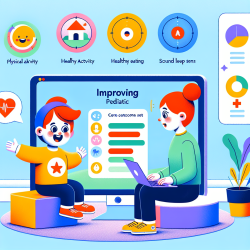Introduction
The COVID-19 pandemic has reshaped the landscape of physical activity (PA), prompting a surge in the popularity of web-based fitness videos on platforms like YouTube and Instagram. These platforms offer a convenient, accessible, and cost-effective means of engaging in physical activity, especially during times when traditional exercise options are limited. A recent study titled Engagement With Web-Based Fitness Videos on YouTube and Instagram During the COVID-19 Pandemic: Longitudinal Study explores patterns of engagement with these videos, providing valuable insights for practitioners seeking to enhance their skills and engage clients effectively.
Understanding Engagement Patterns
The study analyzed engagement metrics such as views, likes, and comments for web-based fitness videos posted during the pandemic. It revealed that while initial engagement was high, there was a notable decline over time. This pattern mirrors traditional exercise programs, where adherence often wanes after the initial enthusiasm. Practitioners can leverage these insights to understand the challenges of maintaining long-term engagement and develop strategies to address them.
Practical Implications for Practitioners
Practitioners can apply the study's findings in several ways to improve their services:
- Variety and Consistency: Regularly posting new and varied content can help sustain interest and engagement. Practitioners should consider diversifying their offerings to include different types of exercises and formats.
- Behavior Change Techniques: Integrating behavior change techniques, such as goal setting and progress tracking, can enhance motivation and adherence. Practitioners can incorporate these techniques into their sessions to encourage clients to stay committed.
- Social Interaction: Encouraging interaction through comments and feedback can create a sense of community and support. Practitioners can foster engagement by actively responding to comments and facilitating discussions.
Encouraging Further Research
While the study provides valuable insights, it also highlights the need for further research to explore the long-term effectiveness of web-based fitness programs. Practitioners are encouraged to conduct their own research or collaborate with researchers to identify common elements that drive engagement and adherence. Understanding the specific needs and preferences of different populations can also inform the development of tailored interventions.
Conclusion
The shift towards web-based fitness during the COVID-19 pandemic offers both challenges and opportunities for practitioners. By understanding engagement patterns and applying evidence-based strategies, practitioners can enhance their services and support clients in achieving their fitness goals. To read the original research paper, please follow this link: Engagement With Web-Based Fitness Videos on YouTube and Instagram During the COVID-19 Pandemic: Longitudinal Study.










